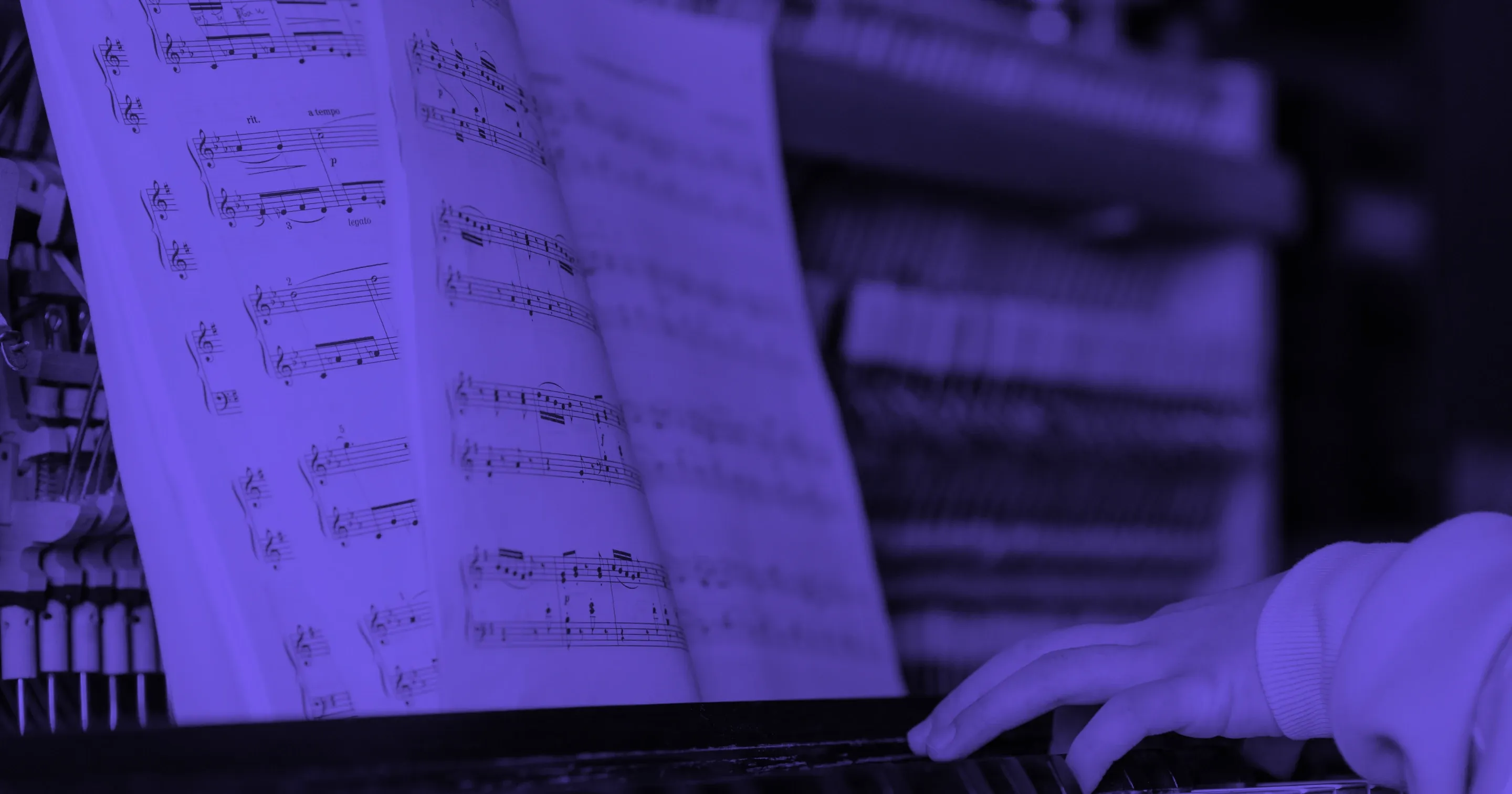
A Comprehensive Tutorial on Creating Seventh Chords in F Major
Discover how to play seventh chords in F major. Our guide covers their structure, usage, and tips for musicians to enhance their compositions. Learn more now!
Introduction
Welcome to Musiversal’s tutorial on creating seventh chords within the key of F Major. In this guide, we will explore the structure of 7th chords in F Major, how to build them, and their practical applications in music. Seventh chords can add depth and complexity by incorporating an additional note to the basic triads of the F Major scale. If you want to learn more about basic chords and triads in F Major before diving into seventh chords, click here for our comprehensive introductory guide.
Seventh Chords in F Major
Seventh chords enhance music by adding an additional note to the basic triad, creating a richer harmonic palette. In F Major, each basic triad can be extended to include a seventh note. Here are the seventh chords in the F Major scale:
1. F Major 7 (Fmaj7) - Imaj7
2. G Minor 7 (Gm7) - ii-7
3. A Minor 7 (Am7) - iii-7
4. Bb Major 7 (Bbmaj7) - IVmaj7
5. C Dominant 7 (C7) - V7
6. D Minor 7 (Dm7) - vi-7
7. E Minor 7 Flat 5 (Em7♭5) - vii-7b5
Seventh Chord Diagrams in F Major:
Common Uses of Seventh Chords in Chord Progressions in F Major
Now that you know basic and 7th chords in F major, you can combine them to create chord progressions. Chord progressions are the backbone of any musical piece, providing structure and direction. In F major, certain progressions are commonly used due to their pleasing harmonic flow and emotional impact. Chord progressions that use seventh chords play a pivotal role in various music genres, including jazz, blues, and pop, by adding complexity and depth. Incorporating these chords can enrich your compositions. Each type of seventh chord introduces its own emotional nuance, whether it's anticipation, longing, or resolution, affecting the song's mood. Here are a few popular chord progressions that incorporate 7th chords in F major, along with tips on how to use them effectively in your compositions.
1. I - V - V7 - I
In F Major, this is what the chord progression will look like: I (F) - V (C) - V7 (C7) - I (F) The chord progression above is one of the simplest in the key of F major, since it uses only two chords: F and C. In this chord progression, adding C dominant 7 (C7) into the mix, creates an interesting variation to the use of C, which prevents the progression from getting boring. Using C7 before resolving back to F Major helps create tension, making the resolution to the tonic (F), more satisfying. “Hey Jude”, by the Beatles is a great example of this progression.
2. Imaj -IV-V7-Imaj7
This chord progression adds a sophisticated touch to a classic structure. In F Major, this is what the progression would look like: Imaj7(Fmaj7)-IV(Bb)-V7(C7)-Imaj7(Fmaj7). "Misty" by Erroll Garner (commonly played in E-flat major, but can be transposed to F major) is a good example of the sound created by using the chords in this order. This progression works well in jazz and ballads. The Fmaj7 and Bbmaj7 chords enhance the harmonic richness, while the C7 provides a strong pull back to the Fmaj7, creating a sense of strong resolution. Use it to create a smooth and elegant sound.
3. ii7-V7-Imaj7
The 2 - 5 - 1 is the most common jazz progression and it is pretty popular in classical music. In F Major, this is what the progression would look like: ii7(Gm7)-V7(C7)-Imaj7(Fmaj7). This progression creates smooth and elegant transitions as it is composed of a perfect cadence. It's perfect for creating a sense of forward motion and resolution, to transition between sections, or as a turnaround at the end of a verse. The Gm7 introduces a minor flavor that resolves to the dominant C7, which in turn leads back to the tonic Fmaj7, providing a satisfying or “perfect” closure. “Yellow Submarine”, a Beatles classic, and “Autumn Leaves”, a classic jazz standard by Joseph Kosma, use this progression.
4. Imaj7-vi7-IVmaj7-V7
This versatile progression can be used in various musical contexts. "Stand By Me" by Ben E. King (originally in A major, but can be transposed to F major) is a great example of how to implement this to create an emotional sound. In F Major, this is what the progression would look like: Imaj7(Fmaj7)-vi7(Dm7)-IVmaj7(Bbmaj7)-V7(C7). This progression is great for creating a nostalgic and warm feeling. The movement from Fmaj7 to Dm7 provides a contrast between major and minor, followed by the bright Bbmaj7 and the resolving tension of C7, giving a rich, dynamic feel to the music. It’s perfect for pop and soul music.
5. Imaj7-vi7-ii7-V7
A progression that moves smoothly through various harmonies, often used in pop and jazz. In F Major, this is how it goes: Imaj7(Fmaj7)-vi7(Dm7)-ii7(Gm7)-V7(C7). Use this progression to create a flowing and elegant sound, suitable for both upbeat and mellow tunes, just like Frank Sinatra does in "Fly Me to the Moon" (commonly played in C major, but can be transposed to F major). The way the progression moves from major to minor chords and then to the dominant seventh creates a smooth, natural flow that makes the harmony sound more sophisticated and polished.
6. IVmaj7-Imaj-ii7-V7
This progression starts on the subdominant, creating a smooth flow back to the tonic. "What a Wonderful World" by Louis Armstrong uses this progression to create a warm, uplifting feel, ideal for jazz, pop, and ballads. This is what the chords are in F Major: IVmaj7(Bbmaj7)-Imaj7(Fmaj7)-ii7(Gm7)-V7(C7). The Bbmaj7 chord brings a bright, open feel that contrasts nicely with the more somber Gm7 and the tension-filled C7, which together heighten the emotional impact of the music.
Conclusion
We hope you found this article from our Musiversal Blog helpful. Mastering seventh chords can be a delightful yet complex part of your musical journey. To make this easier, try incorporating some targeted strategies into your practice routine. Listen closely to pieces that prominently feature seventh chords in F Major, and dissect how they are used. Jazz, blues, and classical genres are great places to start, as they often use chord progressions with seventh chords. Pay attention to the different types of seventh chords and how they function within the music.
When you start working on your next song with these seventh chord progressions in F major, you might want to add some professional touches. Maybe you need drums for rhythm, strings for a richer sound, or a vocalist if you'd rather not sing yourself. Musiversal has got you covered. We offer over 60 instruments and services, all provided by world-class remote session musicians ready to craft your next song. Join our community and take your music to the next level.
If you want to learn more or delve deeper into different musical theory topics, check our Musiversal Blog! It’s full of articles with guides, tips, and reviews that make learning music theory as simple as possible. We also cover useful articles in music production, music gear, songwriting, and marketing your music in today’s digital age.
Your Music, No Limits.
Join the Waitlist